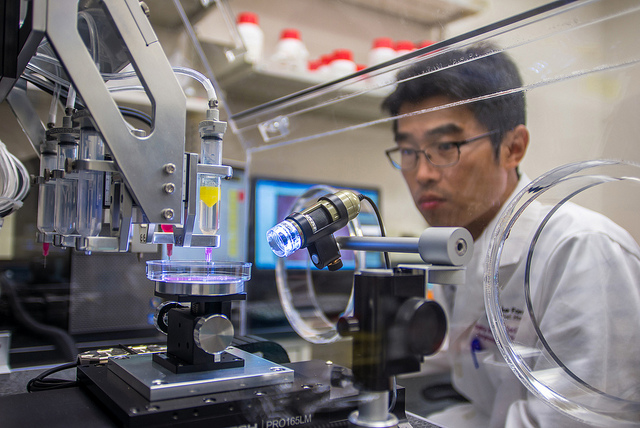
Biomedical additive manufacturing is already a growing industry. As the need for organs inevitably grows with time, will there become a whole engineering industry dedicated to the custom design of lifesaving tissues?

Solving the world’s growing organ shortage is an increasingly complex and needed endeavor. Whether you realize it or not, as driverless cars continue to be implemented, the medical industry is going to continue to lose organs that otherwise saved people’s lives. It may be morbid to think about, but increased safety on the roadways means less viable organs to save those in need. This is only one major issue playing into the growth of the need for tissue. With people living longer and the increase in medicinal technology, there is a rapidly decreasing amount of people dying and able to donate their organs to those waiting. 3D printing biomaterial is a process that many believe will come to the rescue in this dire situation. It is still in the early years of development, but it could yield way to an entire hybrid mechanical and biomedical design industry.
Additive manufacturing of living organs is a little different than your standard 3D printing operation. The printer has to be medical-grade and able to lay down biomaterials at a constant rate, at the correct temperature, and the support structure has to be strong enough yet removable enough to not damage the organ being printed. Printed biomaterial organs also have to be able to be printed in an environment that facilitates their growth after the material is laid down. It’s a process not fully perfected yet, but engineers are getting close.
Oftentimes, the biomaterial used in the printing process requires significant support in order to be made viable. In these cases, a lattice-like scaffolding structure has to be built for the entire organ before biomaterial can be laid down. The materials used for this have to be biomedically compatible with the growth of the organic tissue in order to facilitate growth. Most scaffolds are made from an alginate or hydrogel material that is imprinted with living cells. This creates a cell matrix that is not only helpful to the softer biomaterial application but also essential to the overall function of the organ.
It is through a combination of this biologically imprinted scaffolding material and the correct application of the biomaterial that can support the printing and growth of a living artificial organ. According to 3D Print, the FDA is currently working on medical standards for the bioprinting of human tissue. With the implementation of these standards, bioprinting will take a more mainstream role in the medical industry.

Current implementation of printed biomedical implants has largely been structure based. Rather, the implants have replaced bones or cartilage as opposed to organ tissue. Even still, biomedical engineers have to take scans of the broken bone or tissue and design replacement “parts” through a combination of mechanical design and generative design. Mechanically speaking, the parts have to contain necessary strength and proportions to meet the need of the individual patient. By implementing generative design technology along with latticing, the designs can be organically lightweight while maintaining all of the necessary strength characteristics.
To answer the original question posed on the growing industry, yes. There already is a small industry of specialized mechanical and biomedical designers researching and meeting the needs of the industry. Given projection of advancements in the technology and the significant need the industry will pose, there’s no question that organ and bone design will become a large aspect of the engineering fields.
Sources: Strategic Finance, Science Direct, Research Gate



Add comment
Connect with: Log in
There are no comments